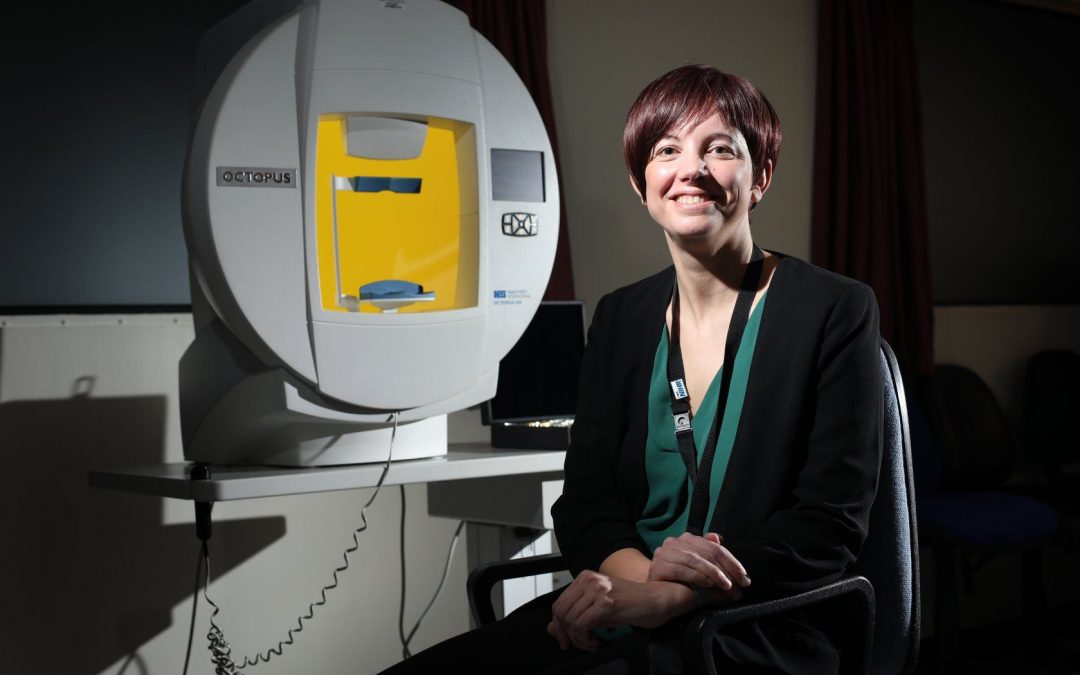Loss of peripheral vision to one side in both eyes is common following a stroke. It can lead to people bumping into objects on the affected side, increased falls, difficulty with reading and loss of independence.
Previous research has found that some people can still see certain visual targets, such as moving or flickering targets, on their blind side immediately after stroke – only to lose these skills over time.
Training
Stroke specialist orthoptist at Dr Claire Howard, part of our rehabilitation and living with disability theme, is working with stroke survivors to explore what targets can be seen immediately after a stroke. She aims to use the results to develop future training to help improve the visual field area after stroke and other brain injuries.
People who take part in the study will have their normal eye examinations, plus two extra assessments – using a variety of different visual targets, for example flickering lights. Assessments are being carried out very early after a stroke to get information on which targets can be seen, then tests repeated to see what changes over time.
Recovery
The study taking place at and sponsored by Northern Care Alliance NHS Foundation Trust (NCA) is being carried out in collaboration with the VISION research unit at the University of Liverpool and the Wellcome Centre for Integrative Neuroimaging, Oxford.
Dr Howard, who is also a Clinical Research Fellow at NCA’s Centre for Clinical and Care Research, said: “This is a very exciting research study that will really help to develop treatments to be used in an NHS setting. Work already carried out at the Wellcome centre in Oxford has shown promising results with visual training for people who suffered a stroke at least six months ago. It seems likely that earlier treatment has potential to have an increased benefit to patients.
“I am excited to work alongside my patients to develop a treatment that is effective and available to all those who need it, at an early stage after stroke. My ultimate goal is to help people to regain vision so that they can recover quickly after stroke and return to doing all the things in life that are important to them, such as reading, going out and returning to work and/or driving”.
